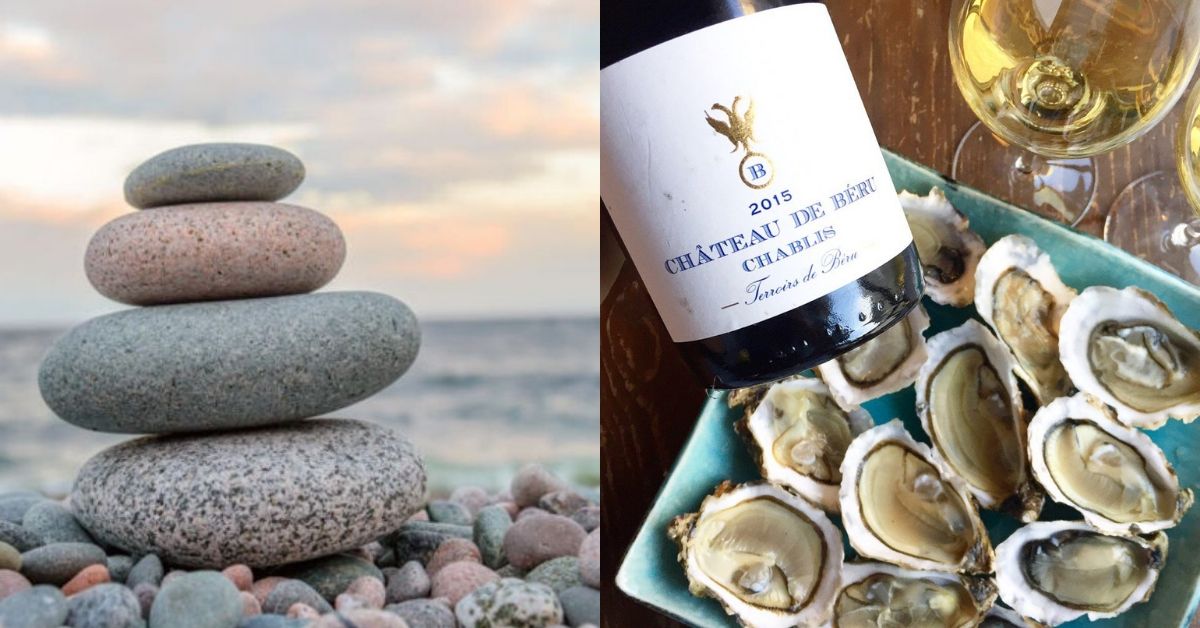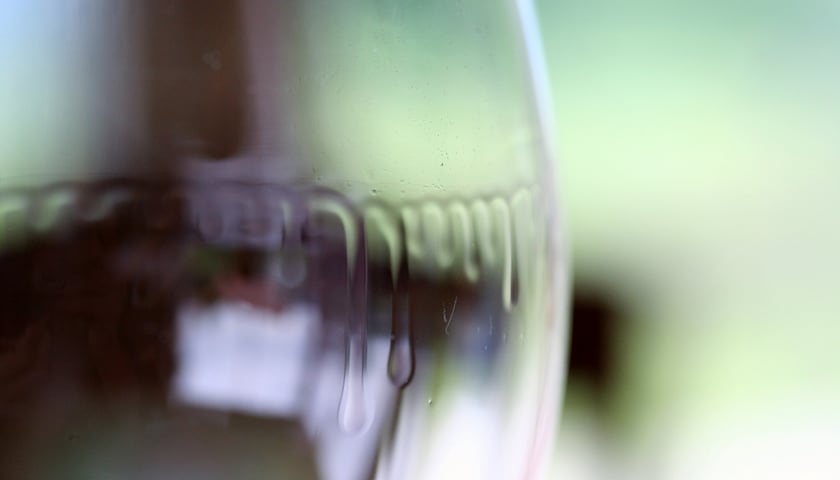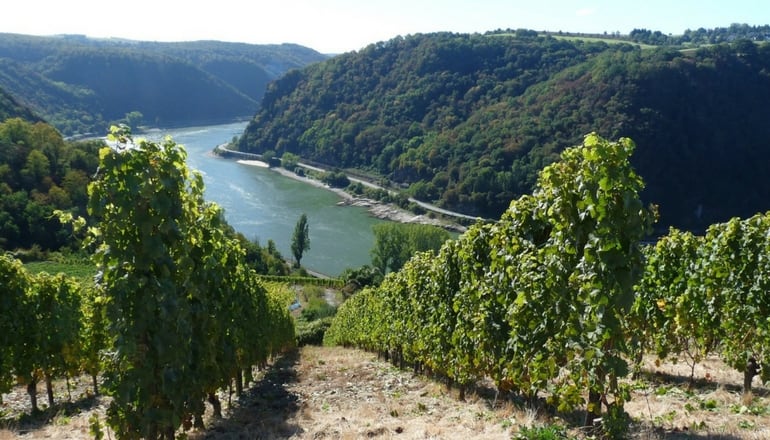好久沒有寫葡萄酒學,被朋友念說最近不務正業一直寫日本酒,那還是偶爾要分享一點冷知識。品飲時我們時常被問到需要熟練的用詞,其中屬「礦物」這詞彙最常產生誤解;如果你遇到有品酒師跟你說,「那些迷人奔放的礦物味是來自土壤的礦物質,葡萄吸收土壤的大地精華之後產生醉人的芳香」,你大可以反問「是否在土壤裡頭埋了牛屎,酒就會有…..」。


「礦物味」是什麼?
在開始解釋這個謎團前,首先要先理解葡萄酒裡不同香氣的組成;坊間最常聽到的香味分子,不外乎是揮發性硫醇族化合物「4-巯基-4-甲基-2戊酮,4MMP (4-mercapto-4-methylpentan-2-one,類似汗臭味、貓尿味)」、「乙酸-3-巯基己醇酯,3MH(3-mercaptohexan-1-ol,類似葡萄柚)」、「3-巯基己基乙酸酯,3MHA(3-mercaptohexyl acetate,類似百香果)」等,以下列出常見的 17 種不同葡萄品種實驗後得出的各實測值。

類似這樣的討論,可以繼續延伸到 IBMP、4MMPOH、3MMB 等諸如此類的風味特徵,然而這些單一物質的濃淡程度並無法完整表現人類味覺感知的「礦物味」。
「礦物味(Minerality)」不是單指某種物質或者某種化學成份,而是在口中的一個認知感,依據每個人對礦物認知的不同,你可能會覺得有部份涼感、硝石、鹹味等等稱為「礦物味」,那這些口感怎麼來的呢?

2018 年國際分子多樣性保存國際組織和多學科數字出版研究所出刊了一篇期刊中,大致描述了對於「礦物味」的探討。
礦物味的表徵同時出現在「嗅覺」及「味覺」上,但因為主觀意識不同,每個人對同一款酒款於嗅覺及味覺上會有不同認知,以 2016 年的 Chablis 為做感官品飲發現,有效樣本 1,339 人專業酒業從業人員中,有 63% 的人認為酒款帶有「礦物」風味,其中 20% 的人認為僅出現在口感上,而 16% 的人認為僅出現在氣味,代表人對於「礦物」的定義出現模糊地帶。

於是這個主題開始被大家廣泛討論,「礦物質從土壤跑到葡萄裡產生礦物味」這件事情開始被推翻,目前也沒有實際證據可以證明 ;但值得一提的是,南非的白蘇維翁農業學家 Dr. Carien Coestzee 在今年 6 月的時候發表一系列「白蘇維翁的礦物味」文章,對於礦物味進行更深一層的解釋。
風味實驗條件
酒款:100% 的白蘇維翁(8 款法國新酒、8 款紐西蘭新酒)
葡萄酒專業受測者:32 位法籍、31 位紐西蘭籍
條件:單獨嗅覺、單獨味覺、整體嗅味覺
方法:受測者被要求依據符合「礦物」條件下排列出強度
描述需要包含:
1. 5 種白蘇維翁香氣特性:草本、柑橘、綠色水果等
2. 3 種味道:甜、苦、酸
3. 5 種礦物或其還原特性:硬石、煙燻、白堊或石灰質、碘、牡蠣殼、鉛筆、石墨、火柴、橡膠、硫化物等
4. 6 種其他特徵:苦澀感、新鮮度、濃度、複雜性、熟悉性、喜好

在細分所謂「礦物」味道時,將氣味描述分為「正相關」、「負相關」,我們發現到大家對於「礦物」風味和「水果」風味是相對的,例如常見的「百香果」等綠色水果的氣息越濃厚,便越少礦物風味產生 ;柑橘類則相反。

於是這裡有個小推論:
「礦物」風味可能與柑橘類氣味分子有部份相關。
接下來,我們要使用一些比較科學的方式來驗證我們的推論。在評斷「礦物」風味的時候,會把酒拿去做基礎分析,以下列出常見的物質分析項目。

常見的酸鹼度、醇類、硫化物等之外,還會有一些酯類、酸類及礦物質元素;白蘇維翁的確存在一定濃度的3MH(柑橘、柚子香氣),繼續測量發現一個趨勢,酸度與感官品飲的「礦石味」產生正相關。
整體趨勢漸漸導向「酸度」與「礦石」的緊密關係,那其他的物質是否也有影響程度呢?讓我們一一來檢視:
法國酒中常出現的火石氣味「氟苄基硫醇 (BMT,Benzenemethanethiol)」 在這次實驗中都並無顯著濃度;那是否需要參考其他化合物呢?汽油味的來源 TDN(1,1,6,-trimethyl-1,2-dihydronapthalene)無檢出,剩下二氧化硫是一個重點;目前雖然還沒有更多證據顯示二氧化硫與礦物質的相關性,但游離的二氧化硫一直是風味上其中一個不確定因素,未來可以在此方面更多加深入研究。

值得一提的是,出現在紐西蘭酒款中的鈣離子與鈉,被試做礦物質的來源之一;無論是葡萄園管理或是製程中,目前都沒有直接證據顯示來自土壤中無機鹽的吸收會對鹹味帶來貢獻,因此「無機鹽的含量與口感無法以線性關係證明」。

地質與土壤養分
幾乎所有的單位元素,特別是金屬元素,葡萄藤若要吸收作為養分,都需要被溶解在水中形成離子狀態;當然部份的吸收可能透過藤蔓、葉花的方式吸收(所謂自然動力法的概念)。
另一方面,改變酒液中礦物質含量的外在因素,有一大部份來自於釀造製程的參數,若以採摘後的果汁加以檢測是無法直接斷定土壤帶給果樹礦物質的證明。
風味的屬性與具體影響因子
現下的感官文獻中對於礦物風味並無涉及具體的「芬芳」,亦即只有「似乎是礦物風味」的嗅覺或口感,可直接影響口感的元素可以收斂成「鹽分」。當然透過葡萄藤攝取濃度過高的鹽分是極為不可能的,但是在海風或沿海霧氣導致鹽分沈積摧熟葡萄的作用,在部份南非的葡萄酒廠有實際的案例。
由於緊鄰大海,酒中含有超過 570mg/ L(為一般酒體的 14 - 57 倍),以作為葡萄酒研究來說,這將可成為另外一個研究主題。
鹽分與礦物風味的關係
鹽以氯化鈉 NaCl 的形式存在於葡萄酒,因此在量測中以 Na 濃度與 Cl 濃度為主,每個國家對於此兩種元素分別的上限各有不同,例如南非的酒不得超過 100mg/L 的 Na,但取決於市場的需求,濃度高低各有市場所需。雖然一般依據限制的鈉含量不應該由品飲識別,但是在不同的酒體或者液體中,人類對氯化鈉的感知能力是有所差異的。

礦物味公式的存在?
[SS+A+CC]-[E+T]= Minerality
最後和大家分享一個「話術」:礦物味公式
英國的葡萄酒大師 Sarah Jane Evans MW,寫出一道公式,其中 SS (Stony Soils)為多石土壤,A(Acid)指酸,CC(Cool Climate)為涼爽氣候,E+T(Ester+Thiol)是說果味相關的酯類和硫醇,O2 是指氧氣;總歸來說就是「因為多石頭的土壤環境與涼爽氣候,加上酸度呈現,去除酯類與硫醇的佔比、及不需要的氧化,成就礦物味。」
基本上是個漂亮的話術,大家放在心中有一把尺即可。
參考文獻:
1. Minerality in Wine: Towards the Reality behind the Myths, Wendy V. Parr, Alex J. Maltman, Sally Easton and Jordi Ballester, 17 October 2018
2. Faculty of Agriculture & Life Sciences, Lincoln University, Canterbury 7647, New Zealand
3. Department of Geography & Earth Sciences, Aberystwyth University, Aberystwyth SY23 3FL, UK; ajm@aber.ac.uk
4. WineWisdom, Winchester SO23 8UY, UK; sally@winewisdom.com
5. Centre des Sciences du Goût et de l’Alimentation, AgroSup Dijon, CNRS, INRA,
Université Bourgogne–Franche-Comté, 21065 Dijon, France; jordi.ballester@u-bourgogne.fr
6. Parr, W. V.; Ballester, J.; Peyron, D.; Grose, C.; Valentin, D. Perceived Minerality in Sauvignon Wines: Influence of Culture and Perception Mode. Food Qual. Prefer. 2015, 41 (March 2018), 121–132. https://doi.org/10.1016/j.foodqual.2014.12.001.
7. Ballester, J.; Mihnea, M.; Peyron, D.; Valentin, D. Exploring Minerality of Burgundy Chardonnay Wines: A Sensory Approach with Wine Experts and Trained Panellists. Aust. J. Grape Wine Res. 2013, 19 (2), 140–152.
8. W.V et al./ Food Research International 87 (2016) 168-179
9. Parr, W. V.; Valentin, D.; Breitmeyer, J.; Peyron, D.; Darriet, P.; Sherlock, R.; Robinson, B.; Grose, C.; Ballester, J. Perceived Minerality in Sauvignon Blanc Wine: Chemical Reality or Cultural Construct? Food Res. Int. 2016, 87, 168–179.
10. Tominaga, T. Contribution of Benzenemethanethiol to the Smoky Aromas of Certain Vitis Vinifera Wines. J. Agric. Food Chem. 2003, 51, 1373–1376.
11. Takatoshi, T.; Raymonde, B.-G.; Des Gachons, C. P. ; Dubourdieu, D. Contribution of Volatile Thiols to the Aromes of White Wines Made from Several Vitis Vinifera Grape Varieties. Am. J. Enol. Vitic. 2000, 51 (2), 178–181.
12. Tominaga, T.; Guimbertau, G.; Dubourdieu, D. Role of Certain Volatile Thiols in the Bouquet of Aged Champagne Wines. J. Agric. Food Chem. 2003, 51 (4), 1016–1020.
13. Heymann, H.; Hopfer, H.; Bershaw, D. An Exploration of the Perception of Minerality in White Wines by Projective Mapping and Descriptive Analysis. J. Sens. Stud. 2014, 29 (1), 1–13.
14. Parr, W. V.; Ballester, J.; Peyron, D.; Grose, C.; Valentin, D. Perceived Minerality in Sauvignon Wines: Influence of Culture and Perception Mode. Food Qual. Prefer. 2015, 41, 121–132.
15. Maltman, A. Minerality in Wine: A Geological Perspective. J. Wine Res. 2013, 24 (3), 169–181.
16. Ballester, J.; Mihnea, M.; Peyron, D.; Valentin, D. Exploring Minerality of Burgundy Chardonnay Wines: A Sensory Approach with Wine Experts and Trained Panellists. Aust. J. Grape Wine Res. 2013, 19 (2), 140–152.
17. Parr, W. V.; Valentin, D.; Breitmeyer, J.; Peyron, D.; Darriet, P.; Sherlock, R.; Robinson, B.; Grose, C.; Ballester, J. Perceived Minerality in Sauvignon Blanc Wine: Chemical Reality or Cultural Construct? Food Res. Int. 2016, 87, 168–179.
18. Tominaga, T. Contribution of Benzenemethanethiol to the Smoky Aromas of Certain Vitis Vinifera Wines. J. Agric. Food Chem. 2003, 51, 1373–1376.
19. Takatoshi, T.; Raymonde, B.-G.; Des Gachons, C. P. ; Dubourdieu, D. Contribution of Volatile Thiols to the Aromes of White Wines Made from Several Vitis Vinifera Grape Varieties. Am. J. Enol. Vitic. 2000, 51 (2), 178–181.
20. Tominaga, T.; Guimbertau, G.; Dubourdieu, D. Role of Certain Volatile Thiols in the Bouquet of Aged Champagne Wines. J. Agric. Food Chem. 2003, 51 (4), 1016–1020.
21. Heymann, H.; Hopfer, H.; Bershaw, D. An Exploration of the Perception of Minerality in White Wines by Projective Mapping and Descriptive Analysis. J. Sens. Stud. 2014, 29 (1), 1–13.
22. Parr, W. V.; Ballester, J.; Peyron, D.; Grose, C.; Valentin, D. Perceived Minerality in Sauvignon Wines: Influence of Culture and Perception Mode. Food Qual. Prefer. 2015, 41, 121–132.
23. Maltman, A. Minerality in Wine: A Geological Perspective. J. Wine Res. 2013, 24 (3), 169–181.
24. Ballester, J.; Mihnea, M.; Peyron, D.; Valentin, D. Exploring Minerality of Burgundy Chardonnay Wines: A Sensory Approach with Wine Experts and Trained Panellists. Aust. J. Grape Wine Res. 2013, 19 (2), 140–152.
25. Ballester, J.; Mihnea, M.; Peyron, D.; Valentin, D. Exploring Minerality of Burgundy Chardonnay Wines: A Sensory Approach with Wine Experts and Trained Panellists. Aust. J. Grape Wine Res. 2013, 19 (2), 140–152. https://doi.org/10.1111/ajgw.12024.
26. Heymann, H.; Hopfer, H.; Bershaw, D. An Exploration of the Perception of Minerality in White Wines by Projective Mapping and Descriptive Analysis. J. Sens. Stud. 2014, 29 (1), 1–13. https://doi.org/10.1111/joss.12076.
27. Rodrigues, H.; Ballester, J.; Saenz-Navajas, M. P.; Valentin, D. Structural Approach of Social Representation: Application to the Concept of Wine Minerality in Experts and Consumers. Food Qual. Prefer. 2015, 46, 166–172. https://doi.org/10.1016/j.foodqual. 2015.07.019.
28. Bastian, S.; de Loryn, L.; Collins, C.; Petrie, P.; Johnson, T. Determination of Na Cl Detection and Recognition Thresholds in Grape Juice and Wine and Sensory Perception of Salt in White Wine. In The 14 th Australian Wine Industry Technical Conference; Adelaide, South Australia.
29. de Loryn, L. C.; Petrie, P. R.; Hasted, A. M.; Johnson, T. E.; Collins, C.; Bastian, S. E. P. Evaluation of Sensory Thresholds and Perception of Sodium Chloride in Grape Juice and Wine. Am. J. Enol. Vitic. 2014, 65 (1), 124–133. https://doi.org/10.5344/ajev.2013.13088.
30. Sugita, M. Taste Perception and Coding in the Periphery. Cell. Mol. Life Sci. 2006, 63 (17), 2000–2015. https://doi.org/10.1007/s00018-006-6100-0.
31. MacNeil, K. The Wine Bible, 2nd edition.; Workman Publishing: New York, 2015.
32. WALKER, R. R.; BLACKMORE, D. H.; CLINGELEFFER, P. R. Impact of Rootstock on Yield and Ion Concentrations in Petioles, Juice and Wine of Shiraz and Chardonnay in Different Viticultural Environments with Different Irrigation Water Salinity. Aust. J. Grape Wine Res. 2010, 16 (1), 243–257. https://doi.org/10.1111/j.1755-0238.2009.00081.x.
33. Liem, D. G.; Miremadi, F.; Keast, R. Reducing Sodium in Foods: The Effect on Flavor. Nutrients 2011, 3 (6), 694–711. https://doi.org/10.3390/nu3060694.








會員迴響